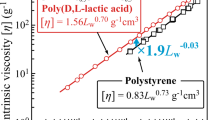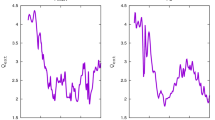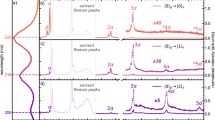Abstract
IN a recent study of the NHCO group in polyamides and proteins1 it was found that the peak extinction value of the infra-red fundamental NH absorption band at 3,300 cm.−1 for nylon 6 depended on the mode of preparation of the specimen film under examination. Films cast from dry formic acid by rapid evaporation of the acid gave lower extinction values referred to the CH absorption band than films subjected to heat annealling.
This is a preview of subscription content, access via your institution
Access options
Subscribe to this journal
Receive 51 print issues and online access
$199.00 per year
only $3.90 per issue
Buy this article
- Purchase on Springer Link
- Instant access to full article PDF
Prices may be subject to local taxes which are calculated during checkout
Similar content being viewed by others
References
Wood, F., and King, G., Trans. Textile Inst. (to be published).
Richards, R. E., and Thompson, H. W., Trans. Farad. Soc., 41, 183 (1945).
Holliday, P., Disc. Farad. Soc., 9, 325 (1950).
Author information
Authors and Affiliations
Rights and permissions
About this article
Cite this article
KING, G., WOOD, F. Infra-Red Extinction Coefficients for Amorphous and Crystalline Nylon. Nature 195, 1093–1094 (1962). https://doi.org/10.1038/1951093a0
Issue Date:
DOI: https://doi.org/10.1038/1951093a0
Comments
By submitting a comment you agree to abide by our Terms and Community Guidelines. If you find something abusive or that does not comply with our terms or guidelines please flag it as inappropriate.



